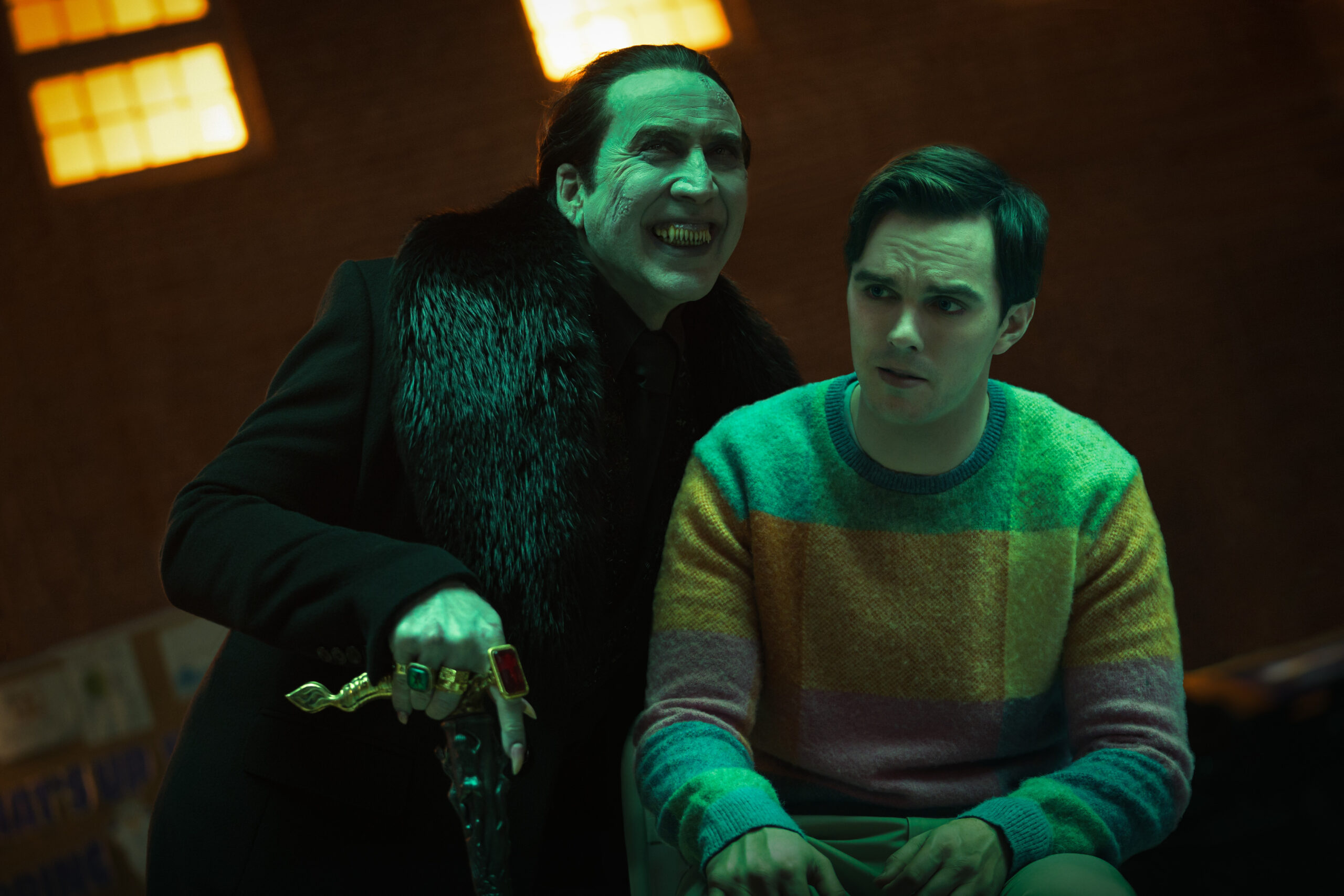As much as the new horror-comedy Renfield wants to key in on the hilarity of Dracula’s long-suffering assistant standing up to his boss, Nicolas Cage can’t help but bring the heat.
Indeed, Renfield‘s first aim is to amp up the absurdity of its amicable title character (Nicholas Hoult) deciding that it’s time to tell Count Dracula (Cage) that he’s tired of his putrid working conditions and the legendary vampire’s snarling attitude and lack of gratitude.
However, thanks to an impressively realized performance from the Oscar-winning Cage as the nefarious bloodsucker, Renfield finds something deeper, much more sinister in the nature of toxic relationships and in the terror that the famous vampire has brought to the silver screen for generations.
In what is Cage’s first major studio project in ages, the actor brings his patented blend of German Expressionism and Japanese kabuki theater to the Bela Lugosi/Christopher Lee austerity of Dracula. Cage’s Drac is a grade-A jerk, a bloodthirsty shadow-dweller who wants to take over the world for some reason and slash and dash anyone who gets in his way.

Cage’s manic performances have always been rooted in rigorous acting styles, ones that force off-kilter facial expressions and wily vocal inflections to create something outlandish that’s actually quite focused in on raw emotion and plot-centered gravitas. He stretches the possibility of the performance to make it more memorable and to make his films more lively. Even if he doesn’t always hit the mark, you’ll never accuse Cage of being boring, and you might appreciate his energy more after the credits roll.
The actor understands the assignment in Renfield as well as anyone could, creating a theatrical Dracula that’s seeped in menace and pettiness. He’ll draw you in with an anglerfish’s charm and bite you with an apex predator’s hunger. It’s one of the all-time portrayals of Transylvania’s worst in a movie.
Outside of Cage’s brilliant villainy, Renfield is plenty of fun. Filmmaker Chris McKay understands what he’s got in Cage and Hoult, who takes the nice-guy vibes Renfield gives off and meshes them with the hysterically uncomfortable nature of his macabre job (finding victims for Dracula to feed on).
McKay also wisely allots the dorkier aspects of the film room to breathe, like the ancient Renfield ditching his Victorian garb for a Macy’s sweater and using those cheesy motivational posters you see at dental offices to decorate his away-from-Dracula apartment.
It’s a tonal lurch through Dracula’s castle at midnight to try and balance all of these genres, but Cage gets it more than most any actors could. He knows how to bring the horror and lean in on the gag all in one take, and McKay’s hyper-violent fight sequences rarely detract from their inherent silliness of Renfield’s quest. Hoult’s chipper demeanor in the face of buckets of blood around him only heightens what Renfield is trying to do.

Anything else going on in the movie takes a backseat to whatever Cage and Hoult are doing. Awkwafina leads a subplot through a dedicated cop taking on a New Orleans crime syndicate that Dracula later teams up with, and she does what she’s asked and admirably plays it straight when it really could’ve been easy not to with all the vampire-ness and such.
Everything falls on the Renfield-Dracula dynamic. That duo brings some hearty chuckles, like when Dracula hides out at Renfield’s apartment while sipping on a bloody martini with eyeball ice cubes. They also find the film’s best moments of freakiness, like when Dracula terrorizes Renfield’s emotional support group one unfortunate night.
It’s a fascinating idea to explore the nature of bad bosses and toxic partners through the lens of one of horror’s most notable pairings, but Renfield does enough outside of its lead performances to give folks a bloody good time at the movies. Thanks to Cage and Hoult, the film’s bite has more meaning.
